My
List |
Addition Date
|
Target
|
Mission
|
Instrument
|
Size
|

|
2007-04-02 |
Io
|
New Horizons
|
LORRI
|
500x256x1 |

|
-
PIA09244:
-
An Eruption on Io
Full Resolution:
TIFF
(128.4 kB)
JPEG
(9.155 kB)
|

|
2007-04-02 |
Io
|
New Horizons
|
LORRI
|
420x420x1 |

|
-
PIA09248:
-
Tvashtar's Plume
Full Resolution:
TIFF
(176.8 kB)
JPEG
(13.89 kB)
|

|
2007-04-02 |
Io
|
New Horizons
|
LORRI
|
498x494x1 |

|
-
PIA09250:
-
A Brilliant Plume
Full Resolution:
TIFF
(246.5 kB)
JPEG
(40.15 kB)
|

|
2007-04-02 |
Io
|
New Horizons
|
MVIC
|
249x235x3 |

|
-
PIA09254:
-
A Burst of Color
Full Resolution:
TIFF
(176 kB)
JPEG
(3.888 kB)
|

|
2007-04-02 |
Io
|
Galileo
Voyager
|
Solid-State Imaging
|
11445x3643x3 |

|
-
PIA09257:
-
Io in Motion

Full Resolution:
TIFF
(125.1 MB)
JPEG
(3.431 MB)
|

|
2007-04-17 |
Io
|
New Horizons
|
MVIC
|
386x199x3 |

|
-
PIA09264:
-
The Colors of the Night
Full Resolution:
TIFF
(230.9 kB)
JPEG
(6.903 kB)
|

|
2007-05-01 |
Io
|
New Horizons
|
LORRI
|
343x339x1 |

|
-
PIA09353:
-
Io in Eclipse
Full Resolution:
TIFF
(116.6 kB)
JPEG
(23.11 kB)
|

|
2007-05-01 |
Io
|
New Horizons
|
LORRI
|
179x179x1 |
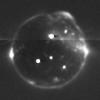
|
-
PIA09354:
-
Io in Eclipse 2
Full Resolution:
TIFF
(32.3 kB)
JPEG
(3.46 kB)
|

|
2007-05-01 |
Io
|
New Horizons
|
LORRI
Solid-State Imaging
|
3000x2025x3 |

|
-
PIA09355:
-
Io Surface Changes
Full Resolution:
TIFF
(18.23 MB)
JPEG
(261.5 kB)
|

|
2007-05-01 |
Io
|
New Horizons
|
LORRI
|
496x370x3 |

|
-
PIA09357:
-
Tvashtar Movie

Full Resolution:
TIFF
(183.9 kB)
JPEG
(7.658 kB)
|

|
2007-05-01 |
Io
|
New Horizons
|
LORRI
|
399x852x1 |

|
-
PIA09359:
-
Tvashtar Composite
Full Resolution:
TIFF
(340.5 kB)
JPEG
(20.64 kB)
|

|
2007-05-01 |
Io
|
New Horizons
|
LEISA
LORRI
MVIC
|
3000x2025x3 |

|
-
PIA09358:
-
Io Through Different 'Eyes'
Full Resolution:
TIFF
(18.23 MB)
JPEG
(289.4 kB)
|

|
2007-05-01 |
Io
|
New Horizons
|
LORRI
|
399x397x1 |

|
-
PIA09360:
-
A "Plumefall" on Io
Full Resolution:
TIFF
(158.8 kB)
JPEG
(12.02 kB)
|

|
2007-05-14 |
Io
|
New Horizons
|
LORRI
|
512x512x1 |
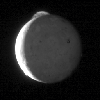
|
-
PIA09665:
-
Tvashtar in Motion

Full Resolution:
TIFF
(262.6 kB)
JPEG
(21.13 kB)
|

|
2007-10-09 |
Io
|
New Horizons
|
LEISA
LORRI
|
959x704x3 |
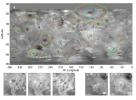
|
-
PIA10099:
-
Changes on Io
Full Resolution:
TIFF
(2.028 MB)
JPEG
(81.55 kB)
|

|
2007-10-09 |
Io
|
New Horizons
|
LEISA
LORRI
|
610x912x3 |

|
-
PIA10100:
-
Io Eclipse Montage
Full Resolution:
TIFF
(1.671 MB)
JPEG
(106.4 kB)
|

|
2007-10-09 |
Io
|
New Horizons
|
LORRI
Ultraviolet Light
|
504x720x3 |

|
-
PIA10101:
-
Tvashtar Montage
Full Resolution:
TIFF
(1.09 MB)
JPEG
(63.22 kB)
|

|
2007-10-09 |
Io
|
New Horizons
|
LEISA
LORRI
MVIC
|
2700x3600x3 |

|
-
PIA10102:
-
Jupiter-Io Montage
Full Resolution:
TIFF
(29.19 MB)
JPEG
(232.7 kB)
|

|
2007-10-16 |
Io
|
New Horizons
|
LEISA
MVIC
|
599x597x3 |

|
-
PIA10103:
-
Io and Europa Meet Again
Full Resolution:
TIFF
(1.074 MB)
JPEG
(9.716 kB)
|

|
2008-02-28 |
Io
|
New Horizons
|
MVIC
|
600x300x3 |
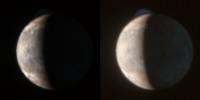
|
-
PIA10249:
-
Seeing Red
Full Resolution:
TIFF
(540.8 kB)
JPEG
(8.52 kB)
|

|
2011-05-12 |
Io
|
Galileo
|
|
1668x1648x3 |

|
-
PIA14116:
-
Io's "Sounding Signal"

Full Resolution:
TIFF
(8.26 MB)
JPEG
(320.2 kB)
|

|
2013-04-04 |
Io
|
|
|
963x913x3 |
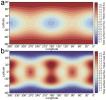
|
-
PIA16941:
-
Io Predicted Heat Flow Map
Full Resolution:
TIFF
(2.639 MB)
JPEG
(126.6 kB)
|

|
1996-01-02 |
Io
|
Galileo
|
|
3014x2422x3 |

|
-
PIA18176:
-
Galileo Over Io (Artist's Concept)
Full Resolution:
TIFF
(21.91 MB)
JPEG
(597.6 kB)
|

|
2014-08-04 |
Io
|
Gemini North Telescope
W. M. Keck Observatory
|
|
900x900x3 |

|
-
PIA18656:
-
Eruptions on Io
Full Resolution:
TIFF
(2.431 MB)
JPEG
(61.14 kB)
|

|
2014-08-04 |
Io
|
Gemini North Telescope
|
|
434x479x3 |

|
-
PIA18657:
-
Bright Outburst on Io
Full Resolution:
TIFF
(624.1 kB)
JPEG
(9.812 kB)
|

|
2018-07-13 |
Io
|
Juno
|
JIRAM
|
2400x1800x3 |

|
-
PIA22599:
-
Jupiter Moon Io in Infrared

Full Resolution:
TIFF
(3.783 MB)
JPEG
(170.1 kB)
|

|
2018-07-13 |
Io
|
Juno
|
JIRAM
|
2400x1800x3 |

|
-
PIA22600:
-
Io's New Southern Hemisphere Hotspot
Full Resolution:
TIFF
(3.787 MB)
JPEG
(180.8 kB)
|

|
2018-07-13 |
Io
|
Juno
|
JIRAM
|
2400x1800x3 |

|
-
PIA22601:
-
Location of Io's New Hotspot
Full Resolution:
TIFF
(4.031 MB)
JPEG
(210.6 kB)
|

|
2022-12-14 |
Io
|
Juno
|
JIRAM
|
1123x1120x3 |

|
-
PIA25698:
-
Jupiter's Moon Io Seen in Infrared Light
Full Resolution:
TIFF
(1.739 MB)
JPEG
(86.1 kB)
|

|
2023-05-15 |
Io
|
Juno
|
JunoCam
|
1024x1024x3 |

|
-
PIA25885:
-
Juno Getting Closer to Jovian Moon Io
Full Resolution:
TIFF
(364 kB)
JPEG
(20.62 kB)
|

|
2023-05-15 |
Io
|
Juno
|
JIRAM
|
1191x400x3 |

|
-
PIA25886:
-
4 Looks at Io Volcanoes
Full Resolution:
TIFF
(530.1 kB)
JPEG
(30.38 kB)
|

|
2023-05-15 |
Io
|
Juno
|
JunoCam
|
3313x859x3 |

|
-
PIA25887:
4 JunoCam Views of Jovian Moon Io
Full Resolution:
TIFF
(3.972 MB)
JPEG
(96.66 kB)
|

|
2023-05-15 |
Io
|
Juno
|
JunoCam
|
1724x859x3 |

|
-
PIA25888:
-
Io in Color and Infrared
Full Resolution:
TIFF
(2.025 MB)
JPEG
(68.16 kB)
|

|
2023-07-26 |
Io
|
Juno
|
JunoCam
|
2261x1892x3 |

|
-
PIA25964:
-
Io Over the Years
Full Resolution:
TIFF
(6.142 MB)
JPEG
(235.3 kB)
|

|
2023-12-22 |
Io
|
Juno
|
JunoCam
|
5037x5223x3 |

|
-
PIA26234:
-
Imaging Io's Volcanos With JunoCam
Full Resolution:
TIFF
(11.65 MB)
JPEG
(570 kB)
|

|
2023-12-22 |
Io
|
Juno
|
JunoCam
|
1091x961x3 |

|
-
PIA26235:
-
Io Plume Captured by JunoCam
Full Resolution:
TIFF
(2.358 MB)
JPEG
(89.66 kB)
|

|
2024-04-17 |
Io
|
Juno
|
JunoCam
|
2296x2296x3 |

|
-
PIA25697:
-
NASA's Juno Mission Captures View of Io's South Polar Region
Full Resolution:
TIFF
(9.985 MB)
JPEG
(303 kB)
|

|
2024-04-18 |
Io
|
Juno
|
JunoCam
|
1070x450x3 |

|
-
PIA26293:
-
Looking Into Io's Loki Patera (Artist's Concept)
Full Resolution:
TIFF
(1.266 MB)
JPEG
(50.77 kB)
|

|
2024-04-18 |
Io
|
Juno
|
JunoCam
|
1059x452x3 |

|
-
PIA26294:
-
Io's 'Steeple Mountain' (Artist's Concept)
Full Resolution:
TIFF
(897.3 kB)
JPEG
(30.86 kB)
|

|
2024-06-26 |
Io
|
Juno
|
JunoCam
|
627x351x3 |

|
-
PIA26340:
-
JunoCam Captures Io Spouting Off
Full Resolution:
TIFF
(473.7 kB)
JPEG
(13.09 kB)
|

|
2024-06-26 |
Io
|
Juno
|
JIRAM
|
3333x2500x3 |
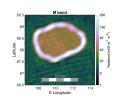
|
-
PIA26371:
-
Juno Captures Lava Lake Chors Patera on Io
Full Resolution:
TIFF
(7.915 MB)
JPEG
(381.4 kB)
|

|
2024-12-12 |
Io
|
Juno
|
|
7328x7328x3 |

|
-
PIA26483:
-
Io's Interior (Artist's Concept)
Full Resolution:
TIFF
(107.2 MB)
JPEG
(6.037 MB)
|

|
2024-12-12 |
Io
|
Juno
|
JunoCam
|
3456x2234x3 |

|
-
PIA26484:
-
Juno Captures North Polar Region of Io
Full Resolution:
TIFF
(12.02 MB)
JPEG
(381.5 kB)
|

|
2024-12-12 |
Io
|
Juno
|
|
3024x2074x3 |

|
-
PIA26485:
-
A View of Loki (Artist's Concept)
Full Resolution:
TIFF
(12.92 MB)
JPEG
(650.4 kB)
|

|
2024-12-12 |
Io
|
Juno
|
JunoCam
|
3372x1889x3 |

|
-
PIA26486:
-
Surface Changes on Io
Full Resolution:
TIFF
(12.5 MB)
JPEG
(631.7 kB)
|

|
2024-12-12 |
Io
|
Juno
|
JunoCam
|
3584x2240x3 |

|
-
PIA26487:
-
NASA's Juno Sees New Feature East of Kanehekili
Full Resolution:
TIFF
(14.5 MB)
JPEG
(626.3 kB)
|

|
2024-12-12 |
Io
|
Juno
|
JunoCam
|
3584x2240x3 |

|
-
PIA26488:
-
Surface Changes at Nusku Captured by NASA's Juno
Full Resolution:
TIFF
(15.28 MB)
JPEG
(454 kB)
|

|
2024-12-12 |
Io
|
Juno
|
Stellar Reference Unit (SRU)
|
3584x2240x1 |

|
-
PIA26489:
-
NASA's Juno Sees Fresh Lava Flows at Zal Patera
Full Resolution:
TIFF
(3.646 MB)
JPEG
(346.7 kB)
|

|
2024-12-12 |
Io
|
Juno
|
Stellar Reference Unit (SRU)
|
2642x2012x3 |

|
-
PIA26490:
-
NASA's Juno Sees New Flows at Zal Montes
Full Resolution:
TIFF
(5.618 MB)
JPEG
(307.4 kB)
|

|
2024-12-12 |
Io
|
Juno
|
Stellar Reference Unit (SRU)
|
1960x1814x3 |

|
-
PIA26521:
-
NASA's Juno Captures Thermal Emissions at Zal Montes
Full Resolution:
TIFF
(4.261 MB)
JPEG
(176.5 kB)
|

|
2024-12-12 |
Io
|
Juno
|
Stellar Reference Unit (SRU)
|
2256x1158x3 |

|
-
PIA26522:
-
NASA's Juno Sees Glowing Lava on Io
Full Resolution:
TIFF
(4.036 MB)
JPEG
(186.7 kB)
|

|
2024-12-12 |
Io
|
Juno
|
Stellar Reference Unit (SRU)
|
3412x1944x3 |

|
-
PIA26523:
-
NASA's Juno Captures Lava Channel Thermal Emissions at Zal Patera
Full Resolution:
TIFF
(6.644 MB)
JPEG
(354.7 kB)
|

|
2024-12-12 |
Io
|
Juno
|
Stellar Reference Unit (SRU)
|
2638x1988x3 |

|
-
PIA26524:
-
NASA's Juno Sees Changes at Masubi
Full Resolution:
TIFF
(4.832 MB)
JPEG
(227.1 kB)
|

|
2024-12-12 |
Io
|
Juno
|
JIRAM
|
651x415x3 |

|
-
PIA26525:
-
The Islands of Loki as Viewed by Voyager 1 and Juno's JIRAM
Full Resolution:
TIFF
(435.4 kB)
JPEG
(35.16 kB)
|

|
2025-01-28 |
Io
|
Juno
|
JunoCam
|
3300x1200x3 |

|
-
PIA26526:
-
Three Views of Io's Southern Hemisphere
Full Resolution:
TIFF
(6.352 MB)
JPEG
(182.9 kB)
|

|
2025-01-28 |
Io
|
Juno
|
JIRAM
|
6667x5000x3 |

|
-
PIA26527:
-
Massive Hot Spot on Io
Full Resolution:
TIFF
(14.69 MB)
JPEG
(910.7 kB)
|

|
2025-04-29 |
Io
|
Juno
|
JIRAM
|
1432x1074x3 |

|
-
PIA26594:
-
Juno's JIRAM Captures Hots Spots on Io
Full Resolution:
TIFF
(391.6 kB)
JPEG
(43.81 kB)
|

|
1997-01-09 |
J Rings
|
Voyager
|
VG ISS - Narrow Angle
|
439x545x1 |

|
-
PIA00376:
-
Rings of Jupiter Star Trail
Full Resolution:
TIFF
(104.2 kB)
JPEG
(17.76 kB)
|

|
1997-01-09 |
J Rings
|
Voyager
|
VG ISS - Narrow Angle
|
439x545x1 |

|
-
PIA00377:
-
Rings of Jupiter
Full Resolution:
TIFF
(21.08 kB)
JPEG
(6.934 kB)
|

|
1998-03-26 |
J Rings
|
Galileo
|
Solid-State Imaging
|
1108x300x1 |

|
-
PIA00538:
The Main Ring of Jupiter (clear filter)
Full Resolution:
TIFF
(108.3 kB)
JPEG
(11.91 kB)
|

|
1998-03-26 |
J Rings
|
Galileo
|
Solid-State Imaging
|
1493x487x1 |

|
-
PIA00657:
-
Jupiter's Main Ring
Full Resolution:
TIFF
(107.1 kB)
JPEG
(21.63 kB)
|

|
1998-03-26 |
J Rings
|
Galileo
|
Solid-State Imaging
|
1152x376x3 |

|
-
PIA00658:
-
Jupiter's Ring Halo
Full Resolution:
TIFF
(52.69 kB)
JPEG
(44.59 kB)
|

|
1998-03-26 |
J Rings
|
Galileo
|
Solid-State Imaging
|
800x410x1 |

|
-
PIA00659:
-
Jupiter's Gossamer Ring
Full Resolution:
TIFF
(162.3 kB)
JPEG
(17.35 kB)
|

|
1998-03-26 |
J Rings
|
Galileo
|
Solid-State Imaging
|
1151x800x3 |

|
-
PIA00701:
-
Jupiter's Main Ring/Ring Halo
Full Resolution:
TIFF
(281.3 kB)
JPEG
(62.93 kB)
|

|
1998-10-30 |
J Rings
|
Voyager
|
|
1715x1706x1 |

|
-
PIA01484:
-
First Evidence of Jupiter Ring
Full Resolution:
TIFF
(1.205 MB)
JPEG
(187.5 kB)
|

|
1999-05-08 |
J Rings
|
Voyager
|
|
1586x1239x3 |

|
-
PIA01529:
-
Jupiter Ring System
Full Resolution:
TIFF
(363.8 kB)
JPEG
(50.06 kB)
|

|
1998-09-15 |
J Rings
|
Galileo
|
Solid-State Imaging
|
2663x1418x1 |

|
-
PIA01621:
-
Jupiter's Ring System
Full Resolution:
TIFF
(145.1 kB)
JPEG
(62.26 kB)
|

|
1998-09-15 |
J Rings
|
Galileo
|
Solid-State Imaging
|
1078x636x1 |

|
-
PIA01622:
-
Jupiter's Main Ring and Halo
Full Resolution:
TIFF
(299.6 kB)
JPEG
(62.45 kB)
|

|
1998-09-15 |
J Rings
|
Galileo
|
Solid-State Imaging
|
2016x1529x3 |

|
-
PIA01623:
-
Jupiter's Gossamer Ring Structure
Full Resolution:
TIFF
(942.3 kB)
JPEG
(176.7 kB)
|

|
1998-09-15 |
J Rings
|
Galileo
|
Solid-State Imaging
|
2560x1920x3 |
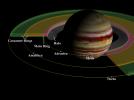
|
-
PIA01627:
-
Jupiter's Inner Satellites and Ring Components
Full Resolution:
TIFF
(2.915 MB)
JPEG
(196.2 kB)
|

|
1998-09-15 |
J Rings
|
Galileo
|
Solid-State Imaging
|
1800x2700x3 |

|
-
PIA01628:
-
Jupiter's Main and Gossamer Ring Structures
Full Resolution:
TIFF
(1.874 MB)
JPEG
(141.2 kB)
|

|
2000-03-23 |
J Rings
|
Voyager
|
VG ISS - Narrow Angle
|
621x672x1 |

|
-
PIA02251:
-
Jupiter's Ring
Full Resolution:
TIFF
(231.5 kB)
JPEG
(51.08 kB)
|

|
2000-09-25 |
J Rings
|
Galileo
|
Solid-State Imaging
|
4306x3306x3 |

|
-
PIA03001:
-
Jovian Ring System Mosaic
Full Resolution:
TIFF
(3.623 MB)
JPEG
(338.8 kB)
|

|
2007-04-02 |
J Rings
|
New Horizons
|
LORRI
|
835x626x1 |

|
-
PIA09249:
-
Jupiter's Rings
Full Resolution:
TIFF
(523.5 kB)
JPEG
(106.2 kB)
|

|
2011-03-31 |
J Rings
|
Galileo
|
Solid-State Imaging
|
715x781x1 |

|
-
PIA13893:
-
Subtle Ripples in Jupiter's Ring
Full Resolution:
TIFF
(559.2 kB)
JPEG
(66.54 kB)
|

|
1996-01-29 |
Jupiter
|
Voyager
|
|
2000x536x3 |

|
-
PIA00011:
Cylindrical Projection of Jupiter
Full Resolution:
TIFF
(2.37 MB)
JPEG
(95.49 kB)
|

|
1996-02-01 |
Jupiter
|
Voyager
|
VG ISS - Narrow Angle
|
895x848x3 |

|
-
PIA00014:
-
Jupiter Great Red Spot
Full Resolution:
TIFF
(1.502 MB)
JPEG
(56.12 kB)
|

|
1996-01-29 |
Jupiter
|
Voyager
|
VG Imaging Science Subsystem
|
940x886x3 |

|
-
PIA00015:
-
Large Brown Oval
Full Resolution:
TIFF
(1.991 MB)
JPEG
(54.79 kB)
|

|
1996-01-29 |
Jupiter
|
Voyager
|
|
760x876x3 |

|
-
PIA00017:
-
Cloud Layers Southeast of the Great Red Spot
Full Resolution:
TIFF
(1.838 MB)
JPEG
(53.42 kB)
|

|
1996-01-29 |
Jupiter
|
Voyager
|
Imaging Science Subsystem
|
896x928x3 |

|
-
PIA00018:
-
Exaggerated Color View of the Great Red Spot
Full Resolution:
TIFF
(1.933 MB)
JPEG
(135.2 kB)
|

|
1996-01-29 |
Jupiter
|
Voyager
|
|
908x880x3 |

|
-
PIA00019:
-
Cloud Layers East of the Great Red Spot
Full Resolution:
TIFF
(1.709 MB)
JPEG
(63.41 kB)
|

|
1996-01-29 |
Jupiter
|
Voyager
|
|
908x880x3 |
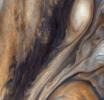
|
-
PIA00020:
-
Exaggerated Color East of the Great Red Spot
Full Resolution:
TIFF
(1.728 MB)
JPEG
(125 kB)
|

|
1996-08-01 |
Jupiter
|
Voyager
|
|
2798x2030x3 |

|
-
PIA00022:
-
Jupiter Great Red Spot Mosaic
Full Resolution:
TIFF
(10.08 MB)
JPEG
(324 kB)
|

|
1996-09-26 |
Jupiter
|
Voyager
|
Imaging Science Subsystem
|
400x400x3 |

|
-
PIA00029:
-
First Close-up Image of Jupiter from Voyager 1
Full Resolution:
TIFF
(280.8 kB)
JPEG
(10.37 kB)
|

|
1996-09-26 |
Jupiter
|
Voyager
|
|
1471x1238x3 |

|
-
PIA00065:
-
Jupiter's Great Red Spot Region
Full Resolution:
TIFF
(3.892 MB)
JPEG
(115.8 kB)
|

|
1996-01-29 |
Jupiter
|
Galileo
|
Solid-State Imaging
|
1600x1250x1 |

|
-
PIA00139:
-
Comet Shoemaker-Levy 9 Fragment W Impact With Jupiter
Full Resolution:
TIFF
(93.2 kB)
JPEG
(37.14 kB)
|

|
1996-01-29 |
Jupiter
|
Voyager
|
VG ISS - Narrow Angle
|
820x540x3 |
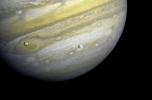
|
-
PIA00144:
-
Jupiter with Satellites Io and Europa
Full Resolution:
TIFF
(821.7 kB)
JPEG
(31.32 kB)
|

|
1997-01-09 |
Jupiter
|
Voyager
|
VG ISS - Wide Angle
|
800x800x1 |

|
-
PIA00204:
-
Lights In The Night
Full Resolution:
TIFF
(153.9 kB)
JPEG
(164.8 kB)
|

|
1996-03-13 |
Jupiter
|
Voyager
|
VG ISS - Narrow Angle
|
1000x1000x3 |

|
-
PIA00235:
-
Jupiter with Satellite Io
Full Resolution:
TIFF
(1.226 MB)
JPEG
(37.26 kB)
|

|
1997-09-07 |
Jupiter
|
Galileo
|
Solid-State Imaging
|
1024x2048x3 |

|
-
PIA00296:
-
Jupiter's Great Red Spot
Full Resolution:
TIFF
(1.712 MB)
JPEG
(59.1 kB)
|

|
1998-06-04 |
Jupiter
|
Voyager
|
|
840x840x3 |

|
-
PIA00343:
-
Jupiter
Full Resolution:
TIFF
(1.194 MB)
JPEG
(42 kB)
|

|
1999-03-06 |
Jupiter
|
Voyager
|
VG ISS - Narrow Angle
|
1000x1000x3 |

|
-
PIA00358:
-
Jupiter and Three Galilean Satellites
Full Resolution:
TIFF
(1.514 MB)
JPEG
(50.61 kB)
|

|
1999-03-06 |
Jupiter
|
Voyager
|
VG ISS - Narrow Angle
|
916x783x3 |

|
-
PIA00359:
-
Jupiter Great Red Spot and White Ovals
Full Resolution:
TIFF
(1.78 MB)
JPEG
(66.58 kB)
|

|
1999-03-06 |
Jupiter
|
Voyager
|
VG ISS - Narrow Angle
|
915x894x3 |

|
-
PIA00360:
-
High Winds in the Jovian Mid-latitudes
Full Resolution:
TIFF
(1.887 MB)
JPEG
(76.32 kB)
|

|
1996-11-13 |
Jupiter
|
Voyager
|
VG ISS - Narrow Angle
|
850x575x3 |

|
-
PIA00371:
-
Jupiter - Io In Front of Jupiter's Turbulent Clouds
Full Resolution:
TIFF
(797.6 kB)
JPEG
(28.95 kB)
|

|
1996-11-13 |
Jupiter
|
Voyager
|
VG ISS - Narrow Angle
|
790x900x3 |

|
-
PIA00372:
-
Jupiter - Region from the Great Red Spot to the South Pole
Full Resolution:
TIFF
(1.269 MB)
JPEG
(60.4 kB)
|

|
1996-09-26 |
Jupiter
|
Voyager
|
VG ISS - Narrow Angle
|
600x600x3 |

|
-
PIA00454:
-
Early Voyager 1 Images of Jupiter
Full Resolution:
TIFF
(491.5 kB)
JPEG
(21.78 kB)
|

|
1996-09-26 |
Jupiter
|
Voyager
|
VG ISS - Narrow Angle
|
500x500x3 |

|
-
PIA00455:
-
Jupiter with Io Crossing
Full Resolution:
TIFF
(412 kB)
JPEG
(15.15 kB)
|

|
1996-09-26 |
Jupiter
|
Voyager
|
VG ISS - Narrow Angle
|
846x800x3 |

|
-
PIA00456:
-
Jupiter's Great Red Spot and South Equatorial Belt
Full Resolution:
TIFF
(1.41 MB)
JPEG
(48.12 kB)
|

|
1996-09-26 |
Jupiter
|
Voyager
|
VG ISS - Narrow Angle
|
607x496x3 |

|
-
PIA00458:
-
Jupiter's North Equatorial Belt
Full Resolution:
TIFF
(748.4 kB)
JPEG
(21.62 kB)
|

 Planetary Data System
Planetary Data System




















































































































